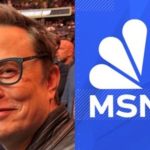It looks like Joan Biskupic will have a multi-part series. Maybe five parts, like in the bad ‘ol days when the Supreme Court had more leaks than the Titanic. Part I was on Moyle. Part II turns to Trump immunity.
Frankly, there is not much insight here. Almost everything she wrote could have been deduced from simply reading the opinions. Again, I wonder how much of what Joan comes from sources with actual inside info, versus people who have informed speculation. Let’s break things down chronologically.
First, a note on sourcing. Biskupic expressly states that Roberts “declined to comment.”
Roberts declined to respond to CNN’s questions about the recent term and this case.
I don’t remember seeing a similar denial in past Biskupic pieces. I think Roberts wanted to make painfully clear that he was not a source for Biskupic. I understand this was an issue with Biskupic’s book on Roberts, where certain things were said on background that were attributed to the Chief Justice. There are no doubts here.
Second, we learn there was broad consensus to reject Jack Smith’s petition for certiorari before judgment:
The immunity case first arrived at the justices’ door in December. Seeking to move the prosecution along, Smith had tried to persuade the court to take early review of the case, before US appellate court action. After the US appellate court ruled, Smith urged them to let the decision – which had spurned the Trump claim of immunity – stand.
Both efforts by the special counsel were in vain. Sources told CNN that there was broad understanding among the justices that they would need to decide the matter themselves, and only after the usual appellate court hearing.
No one dissented from the Court’s order. That suggests there was consensus. But if sources confirm it, then it must be true! With the benefit of hindsight, would the Justices have had such a consensus if they knew how long the D.C. Circuit panel decision would take? I doubt it.
Relatedly, Smith has not yet moved to expedited his Eleventh Circuit appeal–something Seth Barrett Tillman wrote should not be granted. Smith may simply be willing to let this case litigate in the normal process, and hope no broad precedent is set on the special counsel regulations.
Third, after oral argument, the Chief Justice assigned the opinion to himself, and made no efforts to forge any compromise with the Court’s left wing:
Sources familiar with the negotiations told CNN there was an immediate and clear 6-3 split, as the justices met in private in the oak-paneled conference room that adjoins the chief justice’s chambers.
Roberts made no serious effort to entice the three liberal justices for even a modicum of the cross-ideological agreement that distinguished such presidential-powers cases in the past. He believed he could persuade people to look beyond Trump. . . .
Roberts may also have sensed that the liberals were simply not going to accept any version of his sweeping presidential immunity.
This case was not about this President, or any other President. It was about the presidency.
Sources familiar with the internal debate told CNN that Roberts believed that he could assert the large and lasting significance of the case and steer attention away from Trump. As he ended up writing in his opinion, “unlike the political branches and the public at large, we cannot afford to fixate exclusively, or even primarily, on present exigencies.”
Rather, Roberts would only negotiate an agreement with the Court’s conservative members:
In their private session on the case the next day, however, the votes on the core issue lacked any ambiguity and Roberts was ready to write with bold strokes that a former president is entitled to presumptive, if not absolute, immunity for all official acts. Further, Roberts’ construction of official acts, as opposed to private ones, was extensive.
The sharp divide between liberals and conservatives meant that virtually all of Roberts’ negotiating would be among his people on the right.
Roberts was content to have a 6-3 majority, or if needed a 5-4 majority, with Justice Barrett peeling off.
That brings us to Justice Barrett
Third, for the second consecutive piece, Barrett comes off looking like a glowing, consensus-making moderate.
Barrett was the lone justice on the right-wing who tried to close the gap with dissenting justices.
It isn’t clear that Biskupic has any inside information about what Barrett did. Everything written here is entirely deducible from the published decision. Like this part. Is this Biskupic’s speculation or inside info?
Barrett, in general, may have been trying to situate herself in the middle. On several occasions throughout the annual session Barrett separated herself from her conservative brethren. Notably, she fully broke from them in the Fischer case, when the Roberts majority narrowed the reach of a federal obstruction statute that had been used against scores of January 6 defendants.
I would have liked to see some discussion about whether the liberals even considered joining Barrett’s concurrence, to perhaps flip the majority. But we learn nothing.
Fourth, Biskupic writes that Roberts abandoned his traditional institutionalism this term.
The chief justice, now 69 and about to begin his 20th term, appears to have abandoned his usual institutional concerns. . . .
All told, Roberts appears to have reached a turning point. His vision for the high court became more aggressive, and he has perhaps shed the aura of ineffectualness that permeated some public commentary in recent years.
He kept the most important cases for himself, including one that reversed a 1984 precedent giving federal regulators considerable power over health care, food and drug safety, the environment and consumer affairs. (As chief, Roberts makes most opinion-writing assignments; he regularly keeps important cases, but in the past has shared more and evened out assignments among the eight associate justices.)
And it seems the conservative Justices are more agreeable with Roberts–unsurprising because he is agreeable with them.
At the same time, his dealings with his conservative colleagues were more agreeable.
People close to justices on the far-right told CNN those justices were heartened by Roberts, after years of suspicions about his efforts at the center of the bench, most famously with his switched vote in 2012 that upheld the Affordable Care Act.
Biskupic also suggests that Roberts was feeling embittered after standing alone in Dobbs.
Not this year, so very unlike 2022, when Thomas and other conservatives pushed through the Dobbs ruling and Roberts stood alone between embittered factions. The chief justice chided his colleagues on both sides for displaying “a relentless freedom from doubt on the legal issue.”
This year, he stepped to the right, and he displayed no doubt.
I made a very similar point after Loper Bright was decided:
And why did Roberts pull the trigger in Loper Bright–especially after he stopped short in Kisor? I think Roberts was personally humiliated that he couldn’t broker a compromise in Dobbs, and was stuck on the outside looking in. It was position of weakness for the Chief Justice to be. Once Roberts realized there were five votes to overrule Chevron, he did not want to be left in the cold. If you can’t beat ’em, join ’em.
I don’t know how long this Roberts rapprochement will last. Let’s see who wins the election.
Finally, we get this charming vignette hat doesn’t really advance any narrative:
As the justices were drafting opinions, the court hewed to age-old routines. Law clerks arranged their traditional end-of-term skit for late June. Roberts and Justice Clarence Thomas continued with their planned reunions of former law clerks. And Roberts, for the first time in several years, readied to teach in a summer program abroad sponsored by New England Law Boston in Galway, Ireland.
To continue the theme, the Court really is like a reality show, with shifting alliances, though no one can get voted off the island.
The post Biskupic’s Second Installment on <i>Trump</i> Immunity appeared first on Reason.com.






